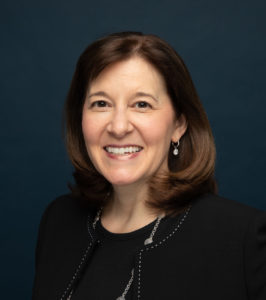

Growing numbers of elderly and severely ill patients. The escalating impact of nursing shortages and staff burnout. Never-ending pressures to cut costs, improve workflow efficiency and optimize revenue.
Operational and clinical leaders at long-term care facilities are facing unprecedented pressures. Many leaders point to the COVID-19 pandemic as a trigger that worsened already concerning shortfalls.
Two-thirds of respondents of a recent American Health Care Association and National Center for Assisted Living survey say they are having a very difficult time filling open positions – and note the situation continues to deteriorate.
To compensate, they are asking existing staff to work overtime and more shifts – compounding the cycle of burnout – or turning to expensive agency-provided staff. Others have reduced patient admissions, and some express fear they will need to close their doors.
Digital bedside assistants can help triage patient requests
It stands to reason that leaders need new ideas to combat a challenge that shows no sign of abating. Many have begun to explore digital solutions to relieve some of the burden on clinical staff.
Among the recent innovations – already in use at some care facilities across the country – is the introduction of smart speakers like Amazon’s Echo at the bedside. When patients need assistance, they simply speak their request instead of using a call button. Virtual assistant software triages the request, applies artificial intelligence and routes it to the right resource.
- Clinical needs are immediately sent to the nursing station for timely nurse response.
- Nonclinical needs are diverted to the most appropriate resource – maintenance or housekeeping, for example.
Besides helping manage urgent and nonurgent requests to optimize nurses and clinical staff, the use of the smart device revealed another benefit: Patients who have fallen have immediate access to help – even if they are unable to reach or press the call button.
The latest generation of virtual assistants are HIPAA-compliant and powered by conversational artificial intelligence (AI) capabilities that have been trained to recognize everyday spoken language. This means patients are not forced into any sort of vernacular that might not be familiar to them – they can use “their own words” rather than try to remember technical clinical terms. And many software vendors have developed deep healthcare expertise, with knowledgebases and conversation flows that are appropriate for the types of requests most often found in a long-term care setting.
Healthcare explores additional use cases
Virtual bedside assistants are a harbinger of additional workflow automation and digital communications strategies that healthcare leaders need to embrace.
For example, another organization facing staff shortages is using automated outreach to check in on patients after discharge. Literature has long shown that communicating with patients to ensure they are following their care plan and assess recovery can help prevent complications, adverse events and readmissions. Virtual assistants can be used – often across multiple communications channels like email, text and phone – to gather basic information. Conversational flows can be designed for patients to answer simple questions and express any concerns. If support is needed, the solution integrates with nurse or call center software for escalation to available human agents. This means staff resources are better deployed – and time better spent – only on patients needing intervention or individual follow-up.
This organization engaged 86% of post-discharge patients via the virtual assistant. Only one-third of the patients required follow-up – meaning nurses were able to focus attention exactly where it was required rather than across a broader cohort.
It stands to reason that a digital-first approach can help long-term care leaders manage patient needs efficiently and effectively, even as they face labor shortages. Smart virtual assistants can be leveraged to triage routine tasks and interactions that don’t require clinical intervention – freeing the care team to focus attention on patients requiring their specialized skill set.
As the “greying of America” continues and the volume of chronically ill patients grows, successful facilities will embrace innovations that help them automate appropriate workflows and optimize the expertise of their clinical staff.
Patty Riskind is a healthcare tech leader and currently serves as CEO of Orbita. She also held leadership positions with Qualtrics (Head of Global Healthcare) and Press Ganey (Chief Client Experience Officer). She received her BA from Brown University and earned her MBA from the Kellogg School of Management at Northwestern University.
The opinions expressed in McKnight’s Long-Term Care News guest submissions are the author’s and are not necessarily those of McKnight’s Long-Term Care News or its editors.





